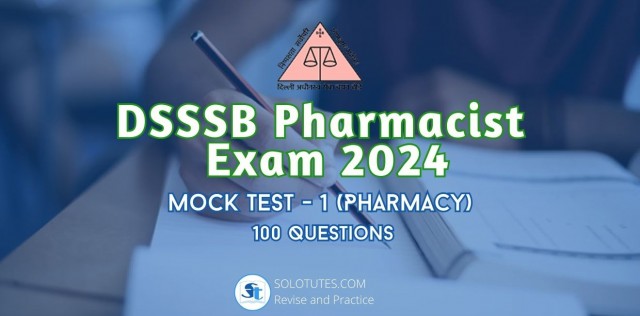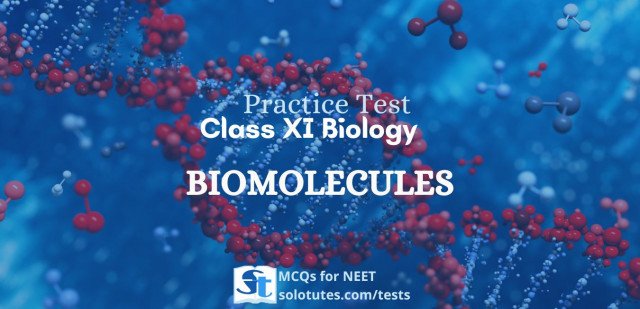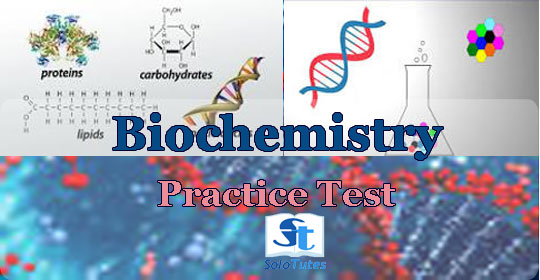Health Education One Liners
Health Education and Community Pharmacy important terms | One Liners
〉
--
Health Education Practice MCQs
1 of 95
Q.1 IUDs prevent pregnancy by
- inhibiting physiological and morphological uterine changes required for implantation
- increasing phagocytosis of spermatozoa within uterus
- suppressing motility of sperms as well as their fertilising capacity
- all of these
Answer ✔ (d) all of these
Explanation: all of these
General Science • Biology • Health Education • Zoology • Class 12th • NEET UG • NEET UG Preparation
2 of 95
Q.2 Cu ions released from copper releasing intrauterine devices (IUDs)
- prevent ovulation
- make uterus unsuitable for implantation
- decrease phagocytosis of sperms
- suppress sperm motility
Answer ✔ (d) suppress sperm motility
Explanation: Cu suppress sperm motility
General Science • Biology • Health Education • Zoology • Class 12th • NEET UG • NEET UG Preparation
3 of 95
Q.3 Confirmatory test for STDs is
- ELISA
- PCR
- DNA hybridisation
- all of these
Answer ✔ (d) all of these
General Science • Biology • Health Education • Zoology • Class 12th • NEET UG • NEET UG Preparation
4 of 95
Q.4 Hepatitis B is transmitted through
- blood transfusion
- intimate physical contact
- sexual contact
- all of these
Answer ✔ (d) all of these
General Science • Biology • Health Education • Zoology • Class 12th • NEET UG • NEET UG Preparation
5 of 95
Q.5 Which of the following STDs are not completely curable ?
- Chlamydiasis, gonorrhoea, trichomoniasis
- Chancroid syphilis, genital warts
- AIDS, syphilis, hepatitis B
- AIDS, genital herpes, hepatitis B
Answer ✔ (d) AIDS, genital herpes, hepatitis B
Explanation: AIDS, genital herpes, hepatitis B aren’t curable.
General Science • Biology • Health Education • Zoology • Class 12th • NEET UG • NEET UG Preparation
6 of 95
Q.6 World AIDS day is
- Dec 21
- Dec 1
- Nov 1
- Jun 11
Answer ✔ (b) Dec 1
General Science • Biology • Health Education • Zoology • Class 12th • NEET UG • NEET UG Preparation
7 of 95
Q.7 In vitro fertilisation is a technique that involves transfer of which one of the following into the fallopian tube ?
- Embryo only, upto 8 cell stage
- Either zygote or early embryo upto 8 cell stage
- Embro of 32 cell stage
- Zygote only
Answer ✔ (b) Either zygote or early embryo upto 8 cell stage
Explanation: Either zygote or early embryo upto 8 cell stage
General Science • Biology • Health Education • Zoology • Class 12th • NEET UG • NEET UG Preparation
8 of 95
Q.8 From the sexually transmitted diseases mentioned below, identify the one which does not specifically affect the sex organs
- Syphilis
- AIDS
- Gonorrhea
- Genital warts
Answer ✔ (b) AIDS
General Science • Biology • Health Education • Zoology • Class 12th • NEET UG • NEET UG Preparation
9 of 95
Q.9 Condoms are one of the most popular contraceptives because of the following reasons.
- These are effective barriers for insemination
- They do not interfere with coital act
- These help in reducing the risk of STDs
- All of the above
Answer ✔ (d) All of the above
Explanation: All of the above
General Science • Biology • Health Education • Zoology • Class 12th • NEET UG • NEET UG Preparation
10 of 95
Q.10 The correct surgical procedure as a contraceptive method is
- ovariectomy
- hysterectomy
- vasectomy
- castration
Answer ✔ (c) vasectomy
Explanation: Corect method is vasectomy
General Science • Biology • Health Education • Zoology • Class 12th • NEET UG • NEET UG Preparation
11 of 95
Q.11 RCH stands for
- routine check-up of health
- reproduction cum hygiene
- reversible contraceptive hazards
- reproductive and child health care
Answer ✔ (d) reproductive and child health care
Explanation: It stands for reproductive and child health care
General Science • Biology • Health Education • Zoology • Class 12th • NEET UG • NEET UG Preparation
12 of 95
Q.12 Amminocentesis is a technique used to
- determine errors in amino acid metabolism in embryo
- pin point specific cardiac ailments in embryo
- determine any hereditary genetic abnormality in embryo
- all of these
Answer ✔ (a) determine errors in amino acid metabolism in embryo
Explanation: It determine errors in amino acid metabolism in embryo
General Science • Biology • Health Education • Zoology • Class 12th • NEET UG • NEET UG Preparation
13 of 95
Q.13 Which of the following cannot be detected in a developing foetus by amniocentesis ?
- Jaundice
- Down’s syndrome
- Cystic fibrosis
- Colourblindness
Answer ✔ (a) Jaundice
Explanation: Jaundice can’t be determined.
General Science • Biology • Health Education • Zoology • Class 12th • NEET UG • NEET UG Preparation
14 of 95
Q.14 In which of the following weeks of pregnancy CVS is done ?
- 12th – 14th week
- 8th – 10th week
- 5th – 7th week
- None of these
Answer ✔ (b) 8th – 10th week
General Science • Biology • Health Education • Zoology • Class 12th • NEET UG • NEET UG Preparation
15 of 95
Q.15 Causes for increased population growth in india is/are
- increase in birth rate
- decrease in death rate
- lack of education
- all of these.
Answer ✔ (d) all of these.
General Science • Biology • Health Education • Zoology • Class 12th • NEET UG • NEET UG Preparation
16 of 95
Q.16 Which of the following pairs contributes to an increase in population ?
- Natality and immigration
- Mortality and emigration
- Natality and emigration
- Mortality and immigration
Answer ✔ (a) Natality and immigration
Explanation: Natality and immigration contributes to an increase in population
General Science • Biology • Health Education • Zoology • Class 12th • NEET UG • NEET UG Preparation
17 of 95
Q.17 Which of the following is correct regarding the consequences of lower population ?
- It increases the poverty of a country
- It leads to shortage of food supply
- It results in unemployment
- All of these
Answer ✔ (d) All of these
General Science • Biology • Health Education • Zoology • Class 12th • NEET UG • NEET UG Preparation
18 of 95
Q.18 The best way to decrease population of a country is
- to educate people
- to have better houses
- to kill people on a large scale
- to practice and implement familay planning
Answer ✔ (d) to practice and implement familay planning
Explanation: It can be decreased by family planning
General Science • Biology • Health Education • Zoology • Class 12th • NEET UG • NEET UG Preparation
19 of 95
Q.19 Which of the following correctly describes the measures hat can be used to control over-population ?
- Educating people about the advantages of a small family
- Raising the age of marriage
- Encouraging family planning programme
- All of these
Answer ✔ (d) All of these
General Science • Biology • Health Education • Zoology • Class 12th • NEET UG • NEET UG Preparation
20 of 95
Q.20 Which of the following is not a characteristic of an ideal contraceptive ?
- User-friendly
- Irreversible
- Easily available
- Least side-effects
Answer ✔ (b) Irreversible
Explanation: It should be reversible
General Science • Biology • Health Education • Zoology • Class 12th • NEET UG • NEET UG Preparation
21 of 95
Q.21 Which of the following is correct regarding HIV, hepatitis B, gonorrhoea, trichomoniasis ?
- Trichomoniasis is an STD whereas others are not.
- Gonorrhoea is a viral disease whereas others are bacterial
- HIV is a pathogen whereas others are diseases
- Hepatitis B is eradicated completely whereas others are not
Answer ✔ (c) HIV is a pathogen whereas others are diseases
Explanation: HIV is a pathogen whereas others are diseases
General Science • Biology • Health Education • Zoology • Class 12th • NEET UG • NEET UG Preparation
22 of 95
Q.22 Which one of the following groups includes sexually transmitted diseases caused by bacteria only ?
- Syphilis, gonorrhoea, chancroid
- Syphilis, chlamydiasis, chancroid
- Syphilis, gonorrhoea, scabies
- Syphilis, scabies, pediculosis
Answer ✔ (a) Syphilis, gonorrhoea, chancroid
Explanation: Syphilis, gonorrhoea, chancroid
General Science • Biology • Health Education • Zoology • Class 12th • NEET UG • NEET UG Preparation
23 of 95
Q.23 The technique called Gamete Intra Fallopian Transfer (GIFT) is recommended for those females
- who cannot produce an ovum
- who cannot retain the foetus inside uterus
- who cannot provide suitable environment for fertilisation
- all of these
Answer ✔ (a) who cannot produce an ovum
Explanation: It is used where who cannot produce an ovum
General Science • Biology • Health Education • Zoology • Class 12th • NEET UG • NEET UG Preparation
24 of 95
Q.24 Which method can be used for women that cannot produce ovum but can provide suitable environment ?
- IUD
- GIFT
- IUI
- IUI
Answer ✔ (b) GIFT
General Science • Biology • Health Education • Zoology • Class 12th • NEET UG • NEET UG Preparation
25 of 95
Q.25 Intensely lactating mothers do not generally conceive due to the
- suppression of gonadotropins
- hypersecretion of gonadotropins
- suppression of gametic transport
- suppression of fertilisation
Answer ✔ (a) suppression of gonadotropins
Explanation: Because of suppression of gonadotropins
General Science • Biology • Health Education • Zoology • Class 12th • NEET UG • NEET UG Preparation
26 of 95
Q.1 A person with sickle cell anaemia is
- more prone to malaria
- more prone to typhoid
- less prone to malaria
- less prone to typhoid
Answer ✔ (c) less prone to malaria
Explanation: A person with sickle cell anaemia is less prone to malaria
General Science • Biology • Health Education • Human Anatomy and Physiology • Zoology • Class 12th • NEET UG • NEET UG Preparation
27 of 95
Q.2 Which one of the following disease is non – communicable ?
- Diphtheria
- Flu
- Cancer
- Malaria
Answer ✔ (c) Cancer
Explanation: Cancer
General Science • Biology • Health Education • Human Anatomy and Physiology • Zoology • Class 12th • NEET UG • NEET UG Preparation
28 of 95
Q.3 Which of the following pairs contains an infectious and a non-infectious disease respectively ?
- Typhoid and AIDS
- AIDS and cancer
- Pneumonia and malaria
- Cancer and malaria
Answer ✔ (b) AIDS and cancer
Explanation: AIDS and cancer contains an infectious and a non-infectious disease respectively
General Science • Biology • Health Education • Human Anatomy and Physiology • Zoology • Class 12th • NEET UG • NEET UG Preparation
29 of 95
Q.4 Typhoid fever in human beings is caused by
- Plasmodium vivax
- Trichophyton
- Salmonella typhi
- Rhinoviruses
Answer ✔ (c) Salmonella typhi
Explanation: Typhoid fever in human beings is caused by Salmonella typhi
General Science • Biology • Health Education • Human Anatomy and Physiology • Zoology • Class 12th • NEET UG • NEET UG Preparation
30 of 95
Q.5 Which of the following is the bacterial disease in humans ?
- Dysentery
- Malaria
- Plague
- Both (a) & (c)
Answer ✔ (d) Both (a) & (c)
Explanation: Both (a) & (c) is the bacterial disease in humans
General Science • Biology • Health Education • Human Anatomy and Physiology • Zoology • Class 12th • NEET UG • NEET UG Preparation
31 of 95
Q.6 Which of the following pathogens causes whooping coough ?
- Legionella spp.
- Burcella melitensis
- Vibrio cholerae
- Burcella melitensis
Answer ✔ (b) Burcella melitensis
Explanation: Burcella melitensis causes whooping coough
General Science • Biology • Health Education • Human Anatomy and Physiology • Zoology • Class 12th • NEET UG • NEET UG Preparation
32 of 95
Q.7 Which one of the following sets includes bacterial diseases ?
- Tetanus, tuberculosis, measles
- Diptheria, leprosy, plague
- Cholera, typhoid, mumps
- Malaria, mumps, poliomyelits
Answer ✔ (b) Diptheria, leprosy, plague
Explanation: Diptheria, leprosy, plague sets includes bacterial diseases
General Science • Biology • Health Education • Human Anatomy and Physiology • Zoology • Class 12th • NEET UG • NEET UG Preparation
33 of 95
Q.8 The common cold is caused by
- Rhino viruses
- Streptococcus pnemoniae
- Salmonella typhimurium
- Plasmodium vivax.
Answer ✔ (a) Rhino viruses
Explanation: The common cold is caused by Rhino viruses.
General Science • Biology • Health Education • Human Anatomy and Physiology • Zoology • Class 12th • NEET UG • NEET UG Preparation
34 of 95
Q.9 Hepatitis B is transmitted through
- sneezing
- female Anopheles
- coughing
- blood transfusion
Answer ✔ (b) female Anopheles
Explanation: female Anopheles
General Science • Biology • Health Education • Human Anatomy and Physiology • Zoology • Class 12th • NEET UG • NEET UG Preparation
35 of 95
Q.10 A toxic substance, responsible for the chills and high fever recurring every three to four days in malarial fever, is
- interferon
- haemozoin
- hirudin
- colostrum
Answer ✔ (b) haemozoin
Explanation: haemozoin
General Science • Biology • Health Education • Human Anatomy and Physiology • Zoology • Class 12th • NEET UG • NEET UG Preparation
36 of 95
Q.11 Humoral immunity is associated with
- T-cells
- B-cells
- macrophages
- both (a) and (b)
Answer ✔ (b) B-cells
Explanation: Humoral immunity is associated with B-cells
General Science • Biology • Health Education • Human Anatomy and Physiology • Zoology • Class 12th • NEET UG • NEET UG Preparation
37 of 95
Q.12 The antibody which can cross placental barrier is
- IgA
- JgE
- IgM
- IgG
Answer ✔ (d) IgG
Explanation: IgG
General Science • Biology • Health Education • Human Anatomy and Physiology • Zoology • Class 12th • NEET UG • NEET UG Preparation
38 of 95
Q.13 The most abundant class of immunoglobulins (Igs) in the body is
- IgA
- IgG
- IgE
- IgM
Answer ✔ (b) IgG
Explanation: IgG
General Science • Biology • Health Education • Human Anatomy and Physiology • Zoology • Class 12th • NEET UG • NEET UG Preparation
39 of 95
Q.14 A protein or polysaccharide molecule that stimulates antibody formation.
- antigen
- antibiotics
- exotoxin
- endotoxins
Answer ✔ (a) antigen
Explanation: A protein or polysaccharide molecule that stimulates antibody formation is known as antigen
General Science • Biology • Health Education • Human Anatomy and Physiology • Zoology • Class 12th • NEET UG • NEET UG Preparation
40 of 95
Q.15 Passive immunity can be conferred directly by
- vaccines
- antitoxins
- colostrum
- both (b) & (c)
Answer ✔ (d) both (b) & (c)
Explanation: both (b) & (c)
General Science • Biology • Health Education • Human Anatomy and Physiology • Zoology • Class 12th • NEET UG • NEET UG Preparation
41 of 95
Q.16 Which form of pathogen is used in vaccination ?
- Activated and strong pathogenic antigens
- Inactivated and weakened pathogenic antigens
- Hyperactive and strong pathogen
- Preformed antibodies
Answer ✔ (b) Inactivated and weakened pathogenic antigens
Explanation: Inactivated and weakened pathogenic antigens
General Science • Biology • Health Education • Human Anatomy and Physiology • Zoology • Class 12th • NEET UG • NEET UG Preparation
42 of 95
Q.17 Injection of antitoxin in tetanus confers which type of immunisation ?
- Active immunisation
- Passive immunisation
- Auto-immunisation
- Humoral immunisation
Answer ✔ (b) Passive immunisation
Explanation: Passive immunisation
General Science • Biology • Health Education • Human Anatomy and Physiology • Zoology • Class 12th • NEET UG • NEET UG Preparation
43 of 95
Q.18 The term ‘antitoxin’ refers to a preparation containing
- B-lymphoctyes and T-lymphocytes
- antibodies to the toxin
- weakend pathogen
- inactivated T-lymphocytes.
Answer ✔ (b) antibodies to the toxin
Explanation: The term ‘antitoxin’ refers to a preparation containing antibodies to the toxin
General Science • Biology • Health Education • Human Anatomy and Physiology • Zoology • Class 12th • NEET UG • NEET UG Preparation
44 of 95
Q.19 Vaccine against polio viruses is an example of
- auto-immunisation
- passive immunisation
- active immunisation
- simple immunisation
Answer ✔ (c) active immunisation
Explanation: active immunisation
General Science • Biology • Health Education • Human Anatomy and Physiology • Zoology • Class 12th • NEET UG • NEET UG Preparation
45 of 95
Q.20 During the life cycle of Plasmodium, sexual reproduction takes place in which of the following hosts ?
- Human
- Female Anopheles mosquito
- Male Anopheles mosquito
- Both (a) and (b)
Answer ✔ (b) Female Anopheles mosquito
Explanation: During the life cycle of Plasmodium, sexual reproduction takes place in Female Anopheles mosquito
General Science • Biology • Health Education • Human Anatomy and Physiology • Zoology • Class 12th • NEET UG • NEET UG Preparation
46 of 95
Q.21 Amoebic dysentery (amoebiasis) is caused by
- Entamoeba histolytica
- E. coli
- Streptococcus pneumoniae
- Trichophyton
Answer ✔ (a) Entamoeba histolytica
Explanation: Amoebic dysentery (amoebiasis) is caused by Entamoeba histolytica
General Science • Biology • Health Education • Human Anatomy and Physiology • Zoology • Class 12th • NEET UG • NEET UG Preparation
47 of 95
Q.22 Which one of the following diseases cannot be cured by taking antibiotics ?
- Plague
- Amoebiasis
- Leprosy
- Whooping cough
Answer ✔ (b) Amoebiasis
Explanation: Amoebiasis cannot be cured by taking antibiotics
General Science • Biology • Health Education • Human Anatomy and Physiology • Zoology • Class 12th • NEET UG • NEET UG Preparation
48 of 95
Q.23 Elephantiasis, a chronic inflammation that results in gross deformities is caused by
- Ascaris
- E.coli
- Wuchereria
- Trichophyton
Answer ✔ (c) Wuchereria
Explanation: Elephantiasis, a chronic inflammation that results in gross deformities is caused by Wuchereria
General Science • Biology • Health Education • Human Anatomy and Physiology • Zoology • Class 12th • NEET UG • NEET UG Preparation
49 of 95
Q.24 Which of the following is affected by the infection of Wuchereria bancrofti ?
- Lymphatic vessels
- Respiratory system
- Nervous system
- Blood circulation
Answer ✔ (a) Lymphatic vessels
Explanation: Lymphatic vessels
General Science • Biology • Health Education • Human Anatomy and Physiology • Zoology • Class 12th • NEET UG • NEET UG Preparation
50 of 95
Q.25 Which of the following diseases is transmitted by the bite of the female mosquito vector ?
- Filariasis
- Amoebiasis
- Typhoid
- Pneumonia
Answer ✔ (a) Filariasis
Explanation: Filariasis
General Science • Biology • Health Education • Human Anatomy and Physiology • Zoology • Class 12th • NEET UG • NEET UG Preparation
51 of 95
Q.1 Vginal sponge, means of family planning belongs to-
- Physical method
- Chemical method
- Hormonal method
- none of the these
Answer ✔ (a) Physical method
Explanation: Vaginal sponge is a methos of delivering a spermicide in cervix and vagina. It provides physical barrier between ovum and sperm.
Pharmacy • Health Education • D. Pharma • B. Pharma • Bachelor of Pharmacy • Diploma in Pharmacy
52 of 95
Q.2 Mala - D (oral pills) contains which of the following hormone?
- Oestrogen
- Progestogen
- Both (a) and (b)
- none of the these
Answer ✔ (c) Both (a) and (b)
Explanation: Mala -D is a combined oral contraceptive pill with the low estrogen and progestogen content which provides good control on menstrual cycle.
Pharmacy • Health Education • D. Pharma • B. Pharma • Bachelor of Pharmacy • Diploma in Pharmacy
53 of 95
Q.3 Water borne disease is-
- Tuberculosis
- cholera
- measles
- influenza
Answer ✔ (b) cholera
Explanation: Cholera is a water borne disease. This infects intestine and caused by Vibrio cholra.
Pharmacy • Health Education • D. Pharma • B. Pharma • Bachelor of Pharmacy • Diploma in Pharmacy
54 of 95
Q.4 In diphtheria the causetive organism affects-
- upper respiratory tract
- Intestine
- brain
- lungs
Answer ✔ (a) upper respiratory tract
Explanation: Diphteria is a upper respiratory tract infectious disease caused by strains of bacteria called Corynebacterium diphtheriae that make a toxin (poison). It is the toxin that can cause people to get very sick. Diphtheria bacteria spread from person to person, usually through respiratory droplets, like from coughing or sneezing.
Pharmacy • Health Education • D. Pharma • B. Pharma • Bachelor of Pharmacy • Diploma in Pharmacy
55 of 95
Q.5 Elisa test is used for diagnosis of-
- Tuberculosis
- Typhoid
- AIDS
- Rabies
Answer ✔ (c) AIDS
Explanation: The Elisa test is used to determine to know antibodies related too certain infection conditions. Elisa test is used for AIDS Diagnosis.
Pharmacy • Health Education • D. Pharma • B. Pharma • Bachelor of Pharmacy • Diploma in Pharmacy
56 of 95
Q.6 In liver, Glucose is stored as-
- Starch
- Glycogen
- Sucrose
- Lactose
Answer ✔ (b) Glycogen
Explanation: Glucose is stored in liver as glycogen, which is multibranched polysachharide. Glucose is the monomer unit of Glycogen. Starch, Sucrose and Lactose are borken down to glucose in the process of digestion. Fructose is also isomerised to glucose.
Pharmacy • Health Education • D. Pharma • B. Pharma • Bachelor of Pharmacy • Diploma in Pharmacy
57 of 95
Q.7 The reserve food material of a plant is-
- Cellulose
- Starch
- Glucose
- Pectine
Answer ✔ (a) Cellulose
Explanation: Cellulose is the reserve food material of plants. It is atype of biofuel produced from lignocelluloses.
Pharmacy • Health Education • D. Pharma • B. Pharma • Bachelor of Pharmacy • Diploma in Pharmacy
58 of 95
Q.8 Measles is caused by-
- Variola virus
- Rubeola virus
- Varicella zoster
- Herpes virus
Answer ✔ (b) Rubeola virus
Explanation: Maesles is caused by rubella virus. It is an infectious disease of respiratory system, immune system, and skin caused by virus especially paromyxo virus.
Pharmacy • Health Education • D. Pharma • B. Pharma • Bachelor of Pharmacy • Diploma in Pharmacy
59 of 95
Q.9 Removal of disease from universe is-
- Eradication
- Prevention
- Epidemic
- Pandemic
Answer ✔ (a) Eradication
Explanation: Eradication of infectious disease is the reduction of the global prevalence in the humans or animals host to zero.
Pharmacy • Health Education • D. Pharma • B. Pharma • Bachelor of Pharmacy • Diploma in Pharmacy
60 of 95
Q.10 Chlorhexidine is used as-
- Disinfectant
- Bacteriostatic
- Antiseptic
- none of the these
Answer ✔ (c) Antiseptic
Explanation: Chlorhexidine salt dissociates and releases negative charged ions at the physiological pH. It is active against the both gram positive and gram negative microorganisms.
Pharmacy • Health Education • D. Pharma • B. Pharma • Bachelor of Pharmacy • Diploma in Pharmacy
61 of 95
Q.11 Malaria is transmitted through -
- Female culex musquito
- Female housefly
- Female anopheles mosquito
- none of the these
Answer ✔ (c) Female anopheles mosquito
Explanation: Female anopheles mosquito spreads malaria and its parasite traget liver to mature and reproduce.
Pharmacy • Health Education • D. Pharma • B. Pharma • Bachelor of Pharmacy • Diploma in Pharmacy
62 of 95
Q.12 The Popular IUCD is-
- Condom
- Copper T
- Foam tablet
- Cream
Answer ✔ (b) Copper T
Explanation: An intrauterine device (IUD or coil) is a small contraceptive device, often t-shaped containing erither copper or levonorgestrel, which is inserted into the uterus.
Pharmacy • Health Education • D. Pharma • B. Pharma • Bachelor of Pharmacy • Diploma in Pharmacy
63 of 95
Q.13 The intrinsic factor for the absorption of iron is-
- Vitamin B12
- Vitamin B6
- Vitamin D
- Vitamin A
Answer ✔ (a) Vitamin B12
Explanation: Vitamin B12 is the intrinsic factor for the absorption of iron (determines how much iron is needed for a healthy blood and cells).It is important for normal blood cells and nerves. Vitamin C Improves the absorption of iron from stomach. follates (vitamin B9 ) needed for the formation of helathy blood cells (RBCs).
Pharmacy • Health Education • D. Pharma • B. Pharma • Bachelor of Pharmacy • Diploma in Pharmacy
64 of 95
Q.14 Which of the following has the highest amount of polyunsaturated fatty acid?
- sunflower oil
- Ground nut oil
- Palm Oil
- Soyabean oil
Answer ✔ (a) sunflower oil
Explanation: Sunflower oil is rich in polyunsaturated fatty acids used as an emollient.
Pharmacy • Health Education • D. Pharma • B. Pharma • Bachelor of Pharmacy • Diploma in Pharmacy
65 of 95
Q.15 Which of the following is the carbohydrate of animal origin?
- Glucose
- Sucrose
- starch
- Glycogen
Answer ✔ (d) Glycogen
Explanation: Glycogen is the animal origin carbohydrate, it is multibranched polysachhride.
Pharmacy • Health Education • D. Pharma • B. Pharma • Bachelor of Pharmacy • Diploma in Pharmacy
66 of 95
Q.16 How much retinol is equal to one I.U.?
- 0.3 mcg
- 0.6 mcg
- 1.2 mcg
- 2 mcg
Answer ✔ (a) 0.3 mcg
Explanation: Retinol is a diterpenoid, other form of vitamin A. Deficiency of Retinol (Vitamin A) causes night blindness. 1 international unit (I.U.) of retinol contains 0.3 mcg of retinol.
Pharmacy • Health Education • D. Pharma • B. Pharma • Bachelor of Pharmacy • Diploma in Pharmacy
67 of 95
Q.17 leprosy mainly affects-
- muscles and bones
- nerves and skin
- testes and eye
- all of the above
Answer ✔ (d) all of the above
Explanation: leprosy mainly affects skin and nerves leading to the disfunction of eyes, bones, muscles nd othe sensary organs.
Pharmacy • Health Education • D. Pharma • B. Pharma • Bachelor of Pharmacy • Diploma in Pharmacy
68 of 95
Q.18 Which is not a live attenuated vaccine?
- BCG
- OPV
- measles
- pertusis
Answer ✔ (d) pertusis
Explanation: Pertussis vaccine is a vaccine that protects against whooping cough. There are two main types: whole-cell vaccines and acellular vaccines.
Pharmacy • Health Education • D. Pharma • B. Pharma • Bachelor of Pharmacy • Diploma in Pharmacy
69 of 95
Q.19 In general, which foods are considered to be high in vitamin K and should be avoided in large amounts when on warfarin dose?
- Citrus fruits
- Dairy products
- bread and cereals
- Green leafy vegatables
Answer ✔ (d) Green leafy vegatables
Explanation: Green leafy vegetables are nutritional power houses filled with vitamins, minerals, and polynutrients.
Pharmacy • Health Education • D. Pharma • B. Pharma • Bachelor of Pharmacy • Diploma in Pharmacy
70 of 95
Q.20 Tocoferol also known as-
- Vitamin D
- Vitamin E
- Vitamin B
- Vitamin K
Answer ✔ (b) Vitamin E
Explanation: Tocoferols and tocotrienols are related compounds have vitamin activity and known as vitamin E compounds. These are fat soluble antioxidants and also have many other functions in the body.
Pharmacy • Health Education • D. Pharma • B. Pharma • Bachelor of Pharmacy • Diploma in Pharmacy
71 of 95
Q.1 What is the full form of DOT?
- Direct Observation Therapy
- District Operation Therapy
- District Observation Treatment
- None of the above
Answer ✔ (a) Direct Observation Therapy
Explanation: DOT means that a trained health care worker or other designated individual provides the prescribed TB drugs and watches the patient swallow everyday.
Health Education • Class 12th • Diploma in Pharmacy
72 of 95
Q.2 Disease caused by Bordetella pertussis-
- Diphtheria
- Tuberculosis
- Chickenpox
- Whooping cough
Answer ✔ (d) Whooping cough
Explanation: Whooping cough (pertussis) is a highly contagious respiratory tract infection.
Health Education • Class 12th • Diploma in Pharmacy
73 of 95
Q.3 IDDM is a type of-
- Cancer
- Diabetes
- Hypotension
- Hypertension
Answer ✔ (b) Diabetes
Explanation: Diabetes is an autoimmune disease resulting in the destruction of insulin producing cells.
Health Education • Class 12th • Diploma in Pharmacy
74 of 95
Q.4 Which one is a permanent contraceptive method?
- Male sterilization
- Barrier method
- Intra - Uterine devices
- Hormonal methods
Answer ✔ (a) Male sterilization
Explanation: Male sterilization is a procedure performed on a man to make it permanent infertile.
Health Education • Class 12th • Diploma in Pharmacy
75 of 95
Q.5 Ziehl-Neelsen staining is done for-
- Spirocheates
- Yeast and fungi
- Mycobacteria
- none of the above
Answer ✔ (c) Mycobacteria
Explanation: Ziehl-Neelsen stain is also known as the acid-fast stain is used for staining the acid-fast organisms, mainly mycobacterium. it was discovered by Franz Ziehl and Friedrich Neelsen.
Health Education • Class 12th • Diploma in Pharmacy
76 of 95
Q.1 The deficiency of any essential constituent of food leads to ……
- Malnutrition
- Malfunction
- Malnation
- Marination
Answer ✔ (a) Malnutrition
Health Education • Diploma
77 of 95
Q.2 PEM occurs particularly in …
- Weanlings
- Childrens in first year of life
- Childrens in second year of life
- All of them
Answer ✔ (d) All of them
Health Education • Diploma
78 of 95
Q.3 A newly weaned child is called …
- Weanlings
- Childrens in first year of life
- Childrens in second year of life
- All of them
Answer ✔ (d) All of them
Health Education • Diploma
79 of 95
Q.4 Composite mixture of substances including proteins, carbohydrates, fats, vitamins and minerals is…
- Food
- Nutrition
- Health
- None of them
Answer ✔ (a) Food
Health Education • Diploma
80 of 95
Q.5 Body building food is also known as…
- Catabolic food
- Anabolic food
- Metabolic food
- All of them
Answer ✔ (b) Anabolic food
Explanation: Anabolic training refers to the building of muscle from protein and nutrients, as opposed to catabolic - which means to break down. Anabolism produces growth and differentiation of cells and an increase in body size, a process that involves synthesis of complex molecules.
Health Education • Diploma
81 of 95
Q.6 Biological value of protein is dependent on…
- Relative proportion of essential amino acids
- Relative proportion of minerals
- Relative proportion of nitrogen
- Relative proportion of oxygen
Answer ✔ (a) Relative proportion of essential amino acids
Health Education • Diploma
82 of 95
Q.7 Adult protein requirements according to lCMR is…
- 1 gm of protein per kg of body weight
- 2 gm of protein per kg of body weight
- 0.5 gm of protein per kg of body weight
- 10 gm of protein per kg of body weight
Answer ✔ (a) 1 gm of protein per kg of body weight
Health Education • Diploma
83 of 95
Q.8 Protein energy malnutrition is also known as…
- Protein calcium malnutrition
- Protein calorie malnutrition
- Protein calcium maintenance
- Protein calorie marasmus
Answer ✔ (b) Protein calorie malnutrition
Health Education • Diploma
84 of 95
Q.9 The condition wherein protein and energy reserves are depleted is…
- Obesity
- Kwashiorkor
- Oedema
- Marasmus
Answer ✔ (d) Marasmus
Health Education • Diploma
85 of 95
Q.10 The condition with adequate calorie intake but relative protein deficiency is…
- Marasmus
- Kwashiorkor
- Oedema
- Obesity
Answer ✔ (b) Kwashiorkor
Health Education • Diploma
86 of 95
Q.1 Salmonella is spread by
- Flies
- Fomites
- Feces
- All of the above
Answer ✔ (d) All of the above
Health Education • D. Pharma • Bachelor of Pharmacy
87 of 95
Q.2 The occurrence of typhoid is high in following circumstances except
- Comes in contact with infected person
- Use of narrow spectrum antibiotic
- Living with poor sanitation
- None of the above
Answer ✔ (b) Use of narrow spectrum antibiotic
Health Education • D. Pharma • Bachelor of Pharmacy
88 of 95
Q.3 The pathogenesis of typhoid fever depends on following except
- Host immunity
- Virulence
- Infectious species
- Volume of organism
Answer ✔ (d) Volume of organism
Health Education • D. Pharma • Bachelor of Pharmacy
89 of 95
Q.4 The typical incubation period of salmonella is _____ days
- 10-14
- 5-8
- 1-2
- 15-20
Answer ✔ (a) 10-14
Health Education • D. Pharma • Bachelor of Pharmacy
90 of 95
Q.5 Which of the following symptom does not appear during first week of infection in typhoid?
- Diarrhoea in children
- Delirium
- Fever
- Myalgia
Answer ✔ (b) Delirium
Health Education • D. Pharma • Bachelor of Pharmacy
91 of 95
Q.6 Which serological test can be used for diagnosis of typhoid fever?
- ELISA
- PCR
- Widal test
- None of the above
Answer ✔ (c) Widal test
Health Education • D. Pharma • Bachelor of Pharmacy
92 of 95
Q.7 Which antibiotic can be employed for treatment of typhoid fever?
- Tetracycline
- Lincosamide
- Azithromycin
- Ciprofloxacin
Answer ✔ (d) Ciprofloxacin
Health Education • D. Pharma • Bachelor of Pharmacy
93 of 95
Q.8 Which of the following drug cannot be given in bacillary dysentery
- Diphenoxylate
- Ciprofloxacin
- Sulfamethoxazole
- None of the above
Answer ✔ (a) Diphenoxylate
Health Education • D. Pharma • Bachelor of Pharmacy
94 of 95
Q.9 In bacillary dysentery usually patient experience symptoms within hours of ingestion of contaminated food and water
- 12 hours
- 24 hours
- 96 hours
- 72 hours
Answer ✔ (d) 72 hours
Health Education • D. Pharma • Bachelor of Pharmacy
95 of 95
Q.10 Parkinson disease is marked by a lack of which chemical in the brain?
- Serotonin
- Norepinephrine
- GABA
- Dopamine
Answer ✔ (d) Dopamine
Health Education • D. Pharma • Bachelor of Pharmacy
.png)





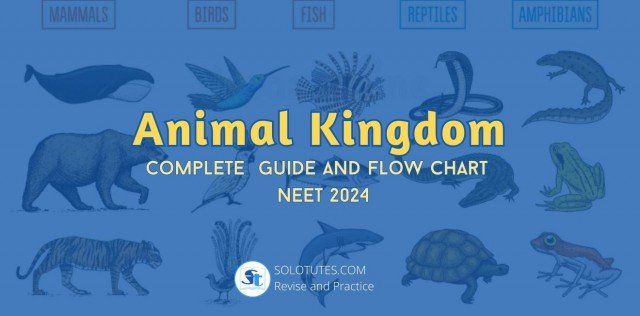
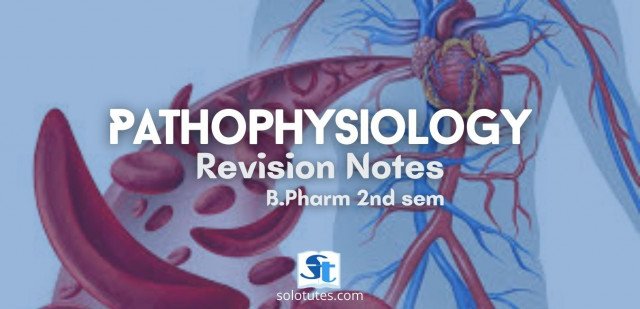




.jpg)
.png)

